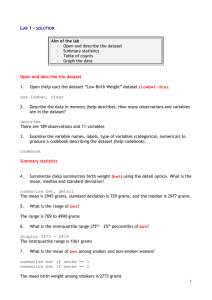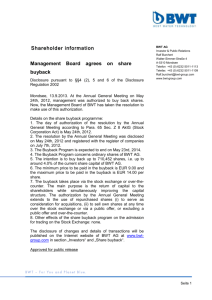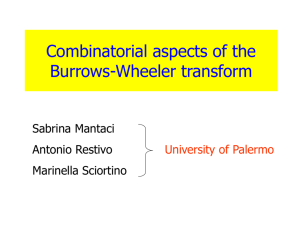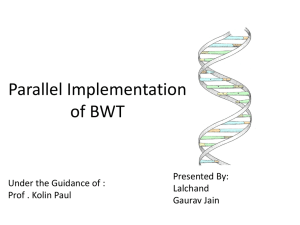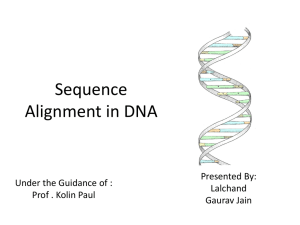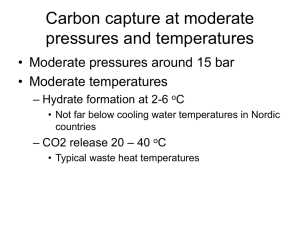text01
advertisement
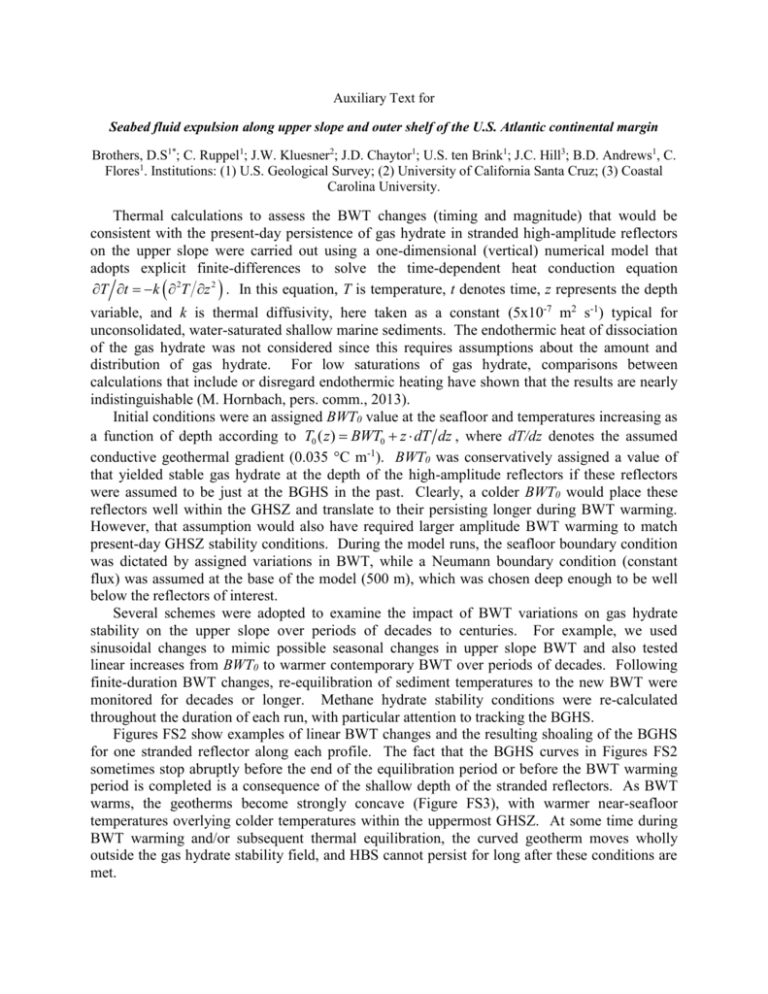
Auxiliary Text for Seabed fluid expulsion along upper slope and outer shelf of the U.S. Atlantic continental margin Brothers, D.S1*; C. Ruppel1; J.W. Kluesner2; J.D. Chaytor1; U.S. ten Brink1; J.C. Hill3; B.D. Andrews1, C. Flores1. Institutions: (1) U.S. Geological Survey; (2) University of California Santa Cruz; (3) Coastal Carolina University. Thermal calculations to assess the BWT changes (timing and magnitude) that would be consistent with the present-day persistence of gas hydrate in stranded high-amplitude reflectors on the upper slope were carried out using a one-dimensional (vertical) numerical model that adopts explicit finite-differences to solve the time-dependent heat conduction equation T t k 2T z 2 . In this equation, T is temperature, t denotes time, z represents the depth variable, and k is thermal diffusivity, here taken as a constant (5x10-7 m2 s-1) typical for unconsolidated, water-saturated shallow marine sediments. The endothermic heat of dissociation of the gas hydrate was not considered since this requires assumptions about the amount and distribution of gas hydrate. For low saturations of gas hydrate, comparisons between calculations that include or disregard endothermic heating have shown that the results are nearly indistinguishable (M. Hornbach, pers. comm., 2013). Initial conditions were an assigned BWT0 value at the seafloor and temperatures increasing as a function of depth according to T0 ( z ) BWT0 z dT dz , where dT/dz denotes the assumed conductive geothermal gradient (0.035 °C m-1). BWT0 was conservatively assigned a value of that yielded stable gas hydrate at the depth of the high-amplitude reflectors if these reflectors were assumed to be just at the BGHS in the past. Clearly, a colder BWT0 would place these reflectors well within the GHSZ and translate to their persisting longer during BWT warming. However, that assumption would also have required larger amplitude BWT warming to match present-day GHSZ stability conditions. During the model runs, the seafloor boundary condition was dictated by assigned variations in BWT, while a Neumann boundary condition (constant flux) was assumed at the base of the model (500 m), which was chosen deep enough to be well below the reflectors of interest. Several schemes were adopted to examine the impact of BWT variations on gas hydrate stability on the upper slope over periods of decades to centuries. For example, we used sinusoidal changes to mimic possible seasonal changes in upper slope BWT and also tested linear increases from BWT0 to warmer contemporary BWT over periods of decades. Following finite-duration BWT changes, re-equilibration of sediment temperatures to the new BWT were monitored for decades or longer. Methane hydrate stability conditions were re-calculated throughout the duration of each run, with particular attention to tracking the BGHS. Figures FS2 show examples of linear BWT changes and the resulting shoaling of the BGHS for one stranded reflector along each profile. The fact that the BGHS curves in Figures FS2 sometimes stop abruptly before the end of the equilibration period or before the BWT warming period is completed is a consequence of the shallow depth of the stranded reflectors. As BWT warms, the geotherms become strongly concave (Figure FS3), with warmer near-seafloor temperatures overlying colder temperatures within the uppermost GHSZ. At some time during BWT warming and/or subsequent thermal equilibration, the curved geotherm moves wholly outside the gas hydrate stability field, and HBS cannot persist for long after these conditions are met. Figure FS2. a. Results of thermal modeling for the high-amplitude reflector mapped at ~75 mbsf at a water depth of 468 m on Profile 61 through Site 1073. This position lies shallower than the current upslope extent of the GHSZ. The dashed curves (right axis) show seafloor temperature changes with time during linear warming of BWT from 3.0°C to 5.7°C (present-day) over periods of 2 y (nearly a step-function change) to 200 y. The curves change from dashed to solid where the modeling continues, but the BGHS has already disappeared. The corresponding solid curves (left axis) show the position of the BGHS with time during each modeled warming trend, with the dots marking the end of the warming period. Note that the BGHS warms completely beyond stability conditions for gas hydrate by ~160 yr for BWT warming distributed over 200 y. The present-day depth of the reflector is marked by the solid black line. (b) Same as for (a) but for a high-amplitude reflector mapped at ~45 mbsf at a water depth of 478 m on Profile 04 along a Tiki trackline. Linear BWT warming from 4°C to the present-day 7.8°C is imposed over periods of 2 to 50 y. For the 50 y case, the pre-existing BGHS warms entirely above hydrate stability conditions less than halfway through the BWT warming period, meaning that no HBS could still exist at present-day for this scenario. Figure FS3. Geotherms as a function of time (labeled in years) after the onset of a linear increase in BWT from 3.0°C to 5.7°C over a 50 y period at 468 m water depth on Profile 61, corresponding to the 50 y curve in Figure FS2(a). The initial geotherm is dark green, and the methane hydrate stability curve is shown in blue. Note the curvature of the geotherms. The heavy green geotherm marks 70 y after the onset of the BWT increase. The BGHS has shoaled from ~92 mbsf to ~75 mbsf up until this time. At 72 y, the entire sedimentary section is now warmer than the hydrate stability curve and cannot support HBS.

